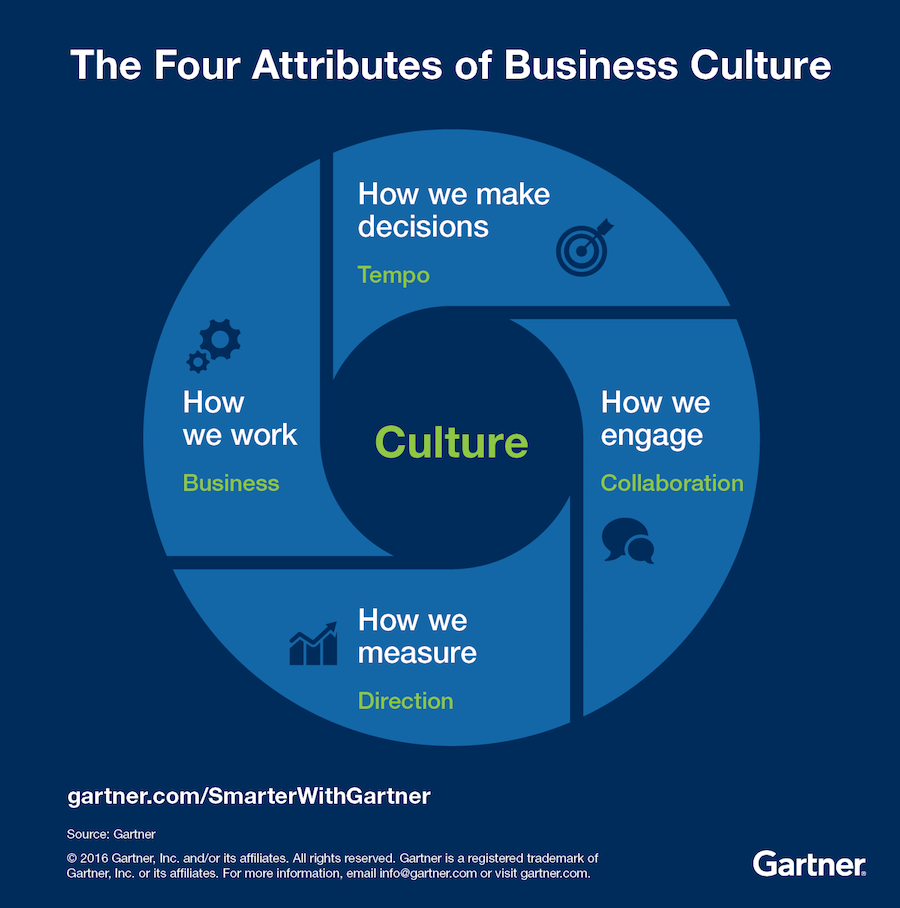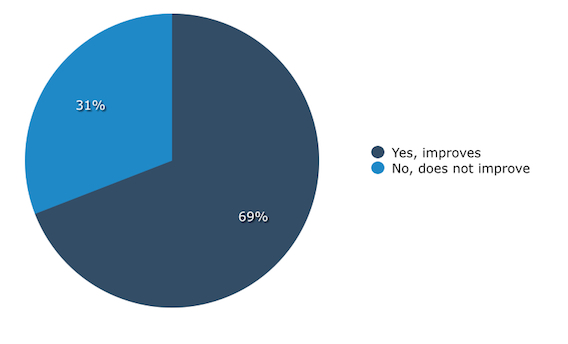How to Create a ‘Customer First’ Culture in Your Organization
Businesses across the board are pouring resources into customer experience (CX) improvement initiatives and rethinking the ways they approach mobile customer service, proactive support and self-service with an eye toward improving the customer experience.
Those that succeed with their initiatives are rewarded in the marketplace, but they’re in the minority. Many companies find that focusing improvements only on individual customer touch points doesn’t drive meaningful improvement.
For the greatest effect, customer-facing CX improvement initiatives need to be internalized and supported from behind the scenes with new IT, new workflows and new perspectives.
Ultimately, businesses do best when their individual CX improvement initiatives are framed in the context of a company-wide shift to a “customer first” organizational culture.
Taking steps toward instilling this culture is the best way to ensure the success of individual CX improvement initiatives.
And, because of their smaller size and organizational agility, SMBs are often well suited to implementing cultural changes.
This report explains the context of a “customer first” culture and provides advice for taking those first few steps.
(Click on a link below to jump directly to that section.)
Corporate Culture: What It Is and What It Isn’t
Corporate Culture: What It Is and What It Isn’t
Marvin Bower was one of the most influential business management consultants of the 20th century. He gave the best shorthand definition of company culture in his 1966 book The Will to Manage. He defined it, very simply, as: “The way we do things around here.”
It’s easy to imagine a new hire hearing “That’s just the way we do things around here,” whenever they ask why something is done the way it’s done.
Those charged with creating customer first cultures within organizations will probably acknowledge that the definition is thin on details. A more practical definition might read:
“Organizational culture is not the sum of roles, processes and measurements; it is the sum of subconscious human behaviors that people repeat based on prior successes and collectively held beliefs.”
Source: Driving Business Transformation by Changing the Culture by Bard Papegaaij, Leigh McMullen and Patrick Meehan (this content is available to Gartner clients).
Let’s break this down from the perspective of someone who’s trying to change an organization’s culture. Based on this definition, a company can’t expect real cultural change if it only:
Changes the roles, responsibilities or titles of employees
Changes the standardized business and workflow processes
Changes the measurements used to track progress and improvements
To be clear, those changes will very likely be required to effect real cultural change, but alone, they are not enough. Real cultural change requires changing the subconscious beliefs and attitudes of employees.
If that sounds like a tall order, it is. This explains why only a minority of companies that attempt cultural change are able to succeed.
But, nobody said this would be easy, right? To realize these goals, it helps to break down the imposing notion of a business culture into the four key attributes that comprise it.

Source: [_Driving Business Transformation by Changing the Culture](http://www.gartner.com/document/3077323/) by Bard Papegaaij,
Leigh McMullen and Patrick Meehan (this content is available to Gartner clients)_
How We Work
The “how” here refers to the specific tools the company uses for its day-to-day processes. In many cases, this will be the software, apps and other IT tools that employees regularly use.
In the realm of customer service, it quickly becomes apparent how IT tools affect company culture and how that culture then determines the customer experience. Imagine, for example, the following scenario:
Example: Software Selection Impacts Culture, For Better or Worse
A large company’s IT department is responsible for technology purchases. It gathers input from all department heads before selecting a new customer service platform. Based on feedback from the engineering department, the new platform is tailored to gather basic technical information whenever a customer contacts the service department.
This software strategy impacts how the customer service agents work. While their first priority is still to assist the customer as quickly and comprehensively as possible, the IT tool they use has a different priority.
Every time a customer contacts the service department, the service agents are required to ask three to five technical questions to start the process of resolving the issue. These questions may not be directly relevant to the customer’s issue, but because of the system in place, they set the tone for all service interactions.
After a month of slipping customer satisfaction metrics, the company changes its policy. The three to five technical questions are no longer mandatory for every service call; support staff can skip over them as needed. In theory, this should help improve the customer experience.
Though the questions are no longer required, they still exert influence. Service agents’ job performance ranks their work for “completeness.” Tickets with full answers to the technical questions are considered more complete. This puts pressure on the agents to try to collect that technical information whenever possible, creating an incentive that effectively results in a “customer second” corporate culture.
How We Make Decisions
Most companies are organized with some type of hierarchy, and decision-making responsibility is often delegated from the top down. While this method is tried-and-true when it comes to maintaining oversight, consistency and compliance, it can also work against efforts to adopt a customer first culture.
Organizations with strict, hierarchical decision-making protocols are often described as “bureaucratic.” Government agencies are great examples of this approach in action. Change occurs very slowly, there’s little employee empowerment and the culture could best be described as “protocol first.”
Call centers are often epicenters of “protocol first” culture, thanks to the widespread use of agent scripts. Right off the bat, customers (nearly) universally dislike speaking with customer service agents who read directly from scripts.
Their frustration may lie dormant until it comes time for the agent to actually do something to resolve the issue, but he or she has their hands tied by lack of empowerment.
For example, instead of immediately sending the complaining customer a replacement for their clearly defective purchase, he or she has to submit the request to their supervisor. Thus, every similar customer service interaction begins with two strikes (or three, if the defective product also gets counted).
The first strike is that the agent isn’t permitted to determine the flow or direction of the conversation based on the customer interaction.
Second, when it comes time to help the customer, the agent can’t offer help quickly or directly, instead needing to seek approval. It’s easy to imagine how customers facing this scenario would feel that they’re anything but the company’s first priority.
Does Call Experience Improve Without a Script?

Source: Survey: What Customers Really Think About Your Call Center Script
Giving frontline support agents more latitude to make decisions themselves within pre-established guidelines is a simple way to improve the caller’s experience, while not losing all oversight or sacrificing service consistency.
How We Engage
The methods employees use to engage with one another and with customers can shape the overall feel of the culture.
Contrast an old-school corporate culture where all communications are emailed with a startup where employees discuss issues across tables in an open-floorplan office. Different methods of engagement create different cultures.
Now consider how a company engages with its customers in a customer service context:
The Medium and the Message are Equally Important
Imagine an old consumer products manufacturer that’s just started to break into digital products. For years, their support department has offered phone and email support. Their internal support platform is closely integrated with these channels, but not with any others.
If you were to ask why only phone and email are offered, the reply might be, “That’s just the way we do things around here.” But when their new digital product attracts a new customer-base, their old methods of engagement start showing just how old they are.
It’s clear that new customers want more options for communication channels. They want live chat and better mobile support. But the company fears it will be difficult (and expensive) to integrate these new channels with their existing service platform. This fear trumps their commitment to their customer first culture. Whether or not they’re willing to admit to it, their culture is better described as “company first.”
A company with a genuine customer first culture will stay true to its mission even if that requires substantial changes to the way they do things. Of course, changes shouldn’t be made impulsively. But they shouldn’t be avoided just to preserve the status quo.
How We Measure
An old business axiom states that, “What gets measured gets done.” An alternate version says, “What gets measured gets managed.”
That emphasis on measurements is evident in most business cultures, stemming often from boardrooms and their discussion of quarterly reports. This trickles down through the ranks to include metrics that track the performances of service representatives.
In a majority of customer service departments, measurements are expressed in the language of performance metrics. There’s a huge variety of metrics from which to choose. Many are simple measurements of productivity: calls answered per time period, resolutions per call, number of upsells etc.
Yet there is no metric that can directly measure a customer first company culture.
When service staff have their performance evaluations tied strictly to certain metrics, the staff understandably will focus on those metrics. No amount of customer first proselytizing will overcome that focus. The culture will remain unchanged.
In fact, if the agenda is pushed too strongly, and management fails to consider how employees are motivated first and foremost by the metrics used to evaluate them, it’s very easy for employees to become disengaged.
Among the great variety of customer service and support solutions, there are many that offer creative ways to foster a customer first culture without abandoning the ability to quantify employee performance. Gamification tools and apps can promote customer first behaviors and collaboration tools help foster a spirit of teamwork.
Next Steps
An organization’s culture is difficult to define. It’s made up of many interdependent beliefs, habits and practices, few of which can be objectively measured.
And given that “What gets measured gets done,” it’s no surprise that many organizations struggle to fully realize their cultural improvement initiatives.
But as we’ve seen above, cultural change can be accomplished by changing the aspects of the workplace that determine culture:
Improve the tools employees use. By improving the channels employees use to communicate and the metrics by which their performance is reviewed, organizations that are devoted to creating customer first cultures can improve their chances of success.
Stay on focus. The key is to not let other interests take precedence, even when those other interests are more vocal or have more immediate or more measurable effects.
Engage stakeholders. Discuss your customer first cultural revolution with employees and gain their feedback and support.
If you’re looking for more immediately actionable CX improvement ideas, you can read about improving CX with better mobile support. Or maybe you’ve already spent enough time planning CX improvements, and too little time enacting them. If that’s the case, then check out 4 Steps to Avoid ‘Analysis Paralysis’ and Improve Customer Experience.